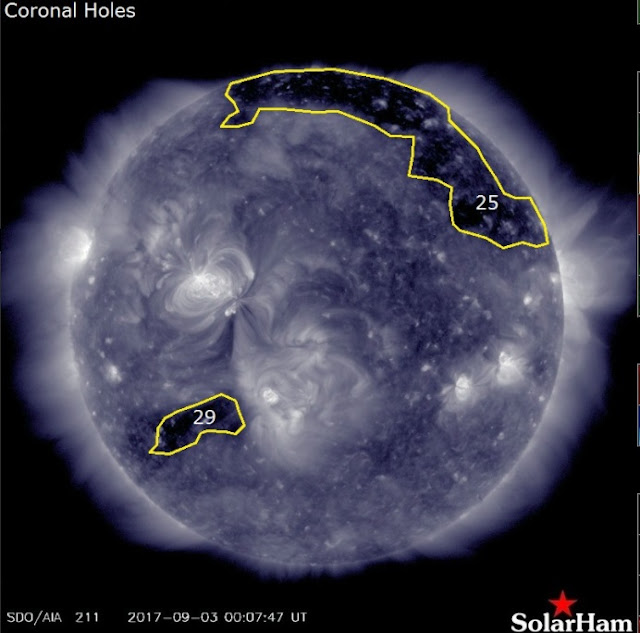By: Gordon Rutherford
Wednesday, September 27, 2017
.
**** VOLCANO WATCH IN EFFECT ***
*** NEXT 48 HOURS ***
.
Lunar Geometries
Apogee (Furthest from Earth)
Lunar Southern Standstill
Mercury at Lunar E. Elong
Saturn at Lunar Conj
Uranus at Lunar 120 Degrees
.
Combinational Geometries
- Mercury and Sun at Geocentric Conjunction
- Jupiter and Uranus at Heiocentric Opposition
- Saturn and Uranus at Heliocentric Opposition
.
Solar Magnetic Field
Mercury (Dia-Magnetic) in the Negative
Mars (Para-Magnetic) in the Positive
Earth/Moon (Para-Magnetic) in the Positive
.
NOTE: Mercury, Mars, and Sun WILL ALL BE AT THE SAME MAGNETIC POLARITY AND AT CONJUNCTION
.
VENUS NOT PLAYING MAGNETIC LINE BACKER TODAY
MERCURY and Sun Conjoined (WATCHOUT) when Mercury enters the Negative Rotating Solar MAgnetic Wind, as this will then Summarize with the Earth facing Positive Solar Magnetic wind. SINCE Mercury is Dia-Magnetic, when Mercury enters the Negative stream, then it will resonate POSITIVELY which will increase the Magnetic effect of the Moon and Sun at Eastern Elongation together.
Neap tide
There is low ocean tide today. Sun and Moon gravitational forces are not aligned, but meet at big angle, so their combined tidal force is weak.
.
Moon in apogee
Moon is reaching point of apogee today at 06:49, this is 13 days after last perigee on 13 September 2017 at 16:04 in ♊ Gemini. Lunar orbit is starting to get closer, while the Moon is moving inward the Earth for 11 days ahead, until it will get to the point of next perigee on 9 October 2017 at 05:51 in ♊ Gemini.
.
Moon before southern standstill (TOMORROW)
12 days after previous North standstill on 14 September 2017 at 13:00 in ♋ Cancer, when Moon has reached northern declination of ∠19.438°. Next day the lunar orbit moves southward to face South declination of ∠-19.516° in the next southern standstill on 28 September 2017 at 10:06 in ♑ Capricorn.
NASA JPL Data
- Weekly Lunar Geometries
NASA JPL Data
- Daily Lunar Geometries
NASA JPL Data
- Daily Combinational Geometries





















































